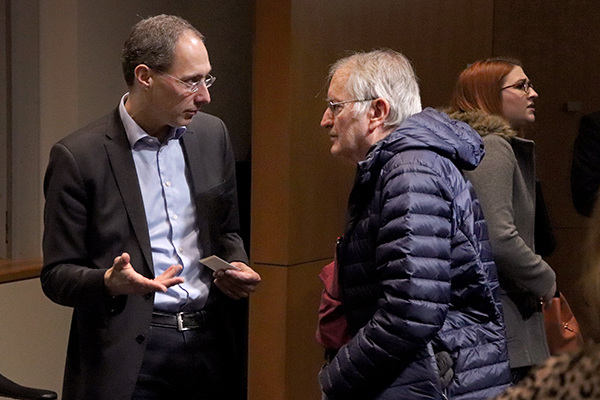As climate change becomes an increasingly prevalent issue, the push for more environmental responsibility is coming from unexpected sources — oil and gas companies.
Yuri Sebregts, chief technology officer and executive vice president technology for Shell, discussed the company’s shift toward green energy with student moderators on Tuesday at the Avaya Auditorium.
“Our focus is on how we segue from the global energy system today to one in the future,” Sebregts said.
As part of its initiative, Shell has invested $2 billion of research money this year to develop models for the energy transition from fossil fuels to renewable energy. UT has received a portion of the money for projects developing energy infrastructure and storage solutions.
“What we currently have with UT are research collaborations in a number of areas that are very important for (Texas) and the world,” Sebregts said. “We continue to have a lot of technology that develops shale gas resource safely, economically and environmentally-responsibly.”
Sebregts said Shell’s long-term focus is preventing drastic climate change through environmentally responsible and safe methods while also being able to satisfy global energy needs.
“I think a lot of people don’t know what oil and gas companies are doing,” said Karan Jerath, petroleum engineering senior and moderator. “Shell … has taken such a drastic … approach to wanting to be the ones to contribute to the transitioning energy environment, and they’re very active in the community as well.”
A variety of new technologies would have to be employed to keep the global average temperature change within the two degree targets set by the Paris Climate Accord, Sebregts said.
Specifically, research models have shown carbon sequestration — which is the process of removing carbon from the air and placing it underground — is necessary to meet the two degree target, said Todd Davidson, a research associate at the UT Energy Institute.
However, Sebregts said the solution to climate change would not come from green energy alone.
“The sun isn’t always shining, the wind isn’t always blowing, plus there’s geography where you have relatively little sun or wind,” Sebregts said. “Gas will continue to be very important as a transition fuel for at least half a century, because it backs up wind and solar power very well.”
Another solution is consumer efficiency, which can also significantly reduce humans’ carbon footprint, Sebregts said.
“Using oil components to make materials that you use for a long time is pretty much the most sustainable way of using oil,” Sebregts said. “If you use it as a mineral material and it goes into a plastic that lasts a long time, that’s not a bad way to use it.”
Oil products can appear in places most people may not consider, such as plastics.
“We can deliver just as high a quality of life by choosing products that will last your whole life rather than choosing products that are throw-away products,” Davidson said.
Sebregts said the energy industry provides an opportunity for people to make an impact on the world.
“The world needs to make a lot of progress,” Sebregts said. “In order to be impactful, I think you need to have a broad understanding of all the aspects that go into the energy system.





















